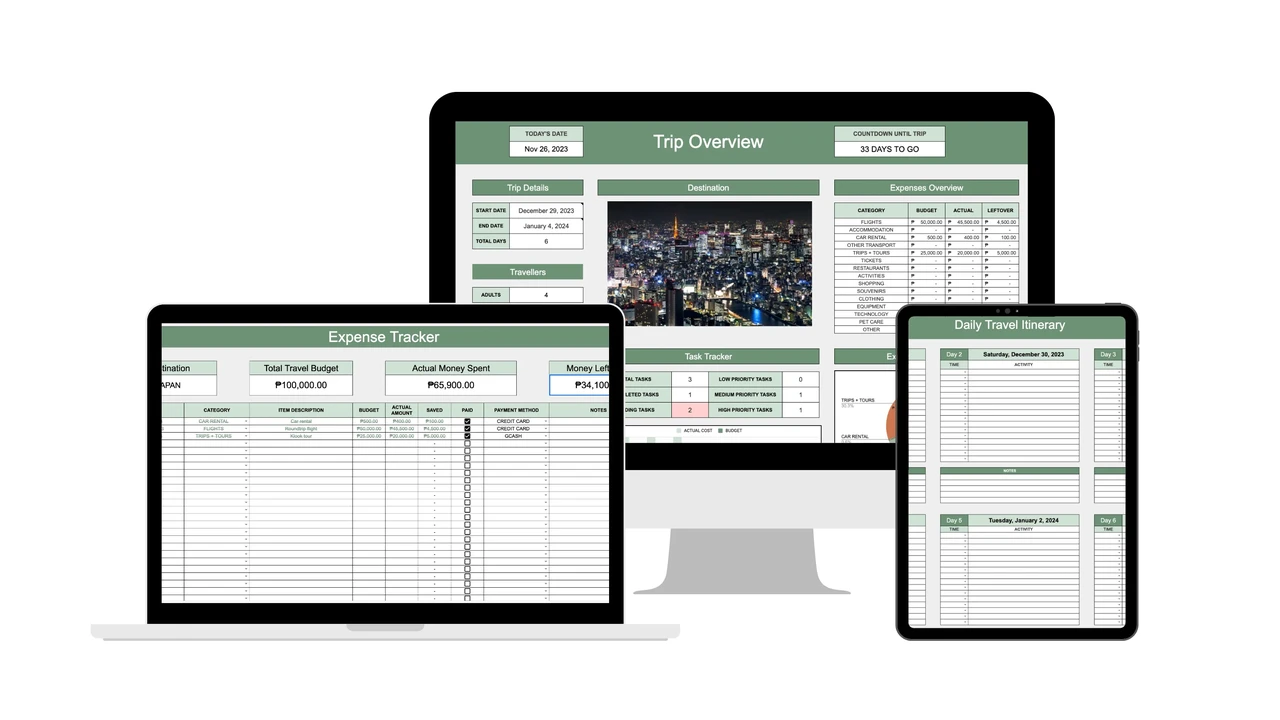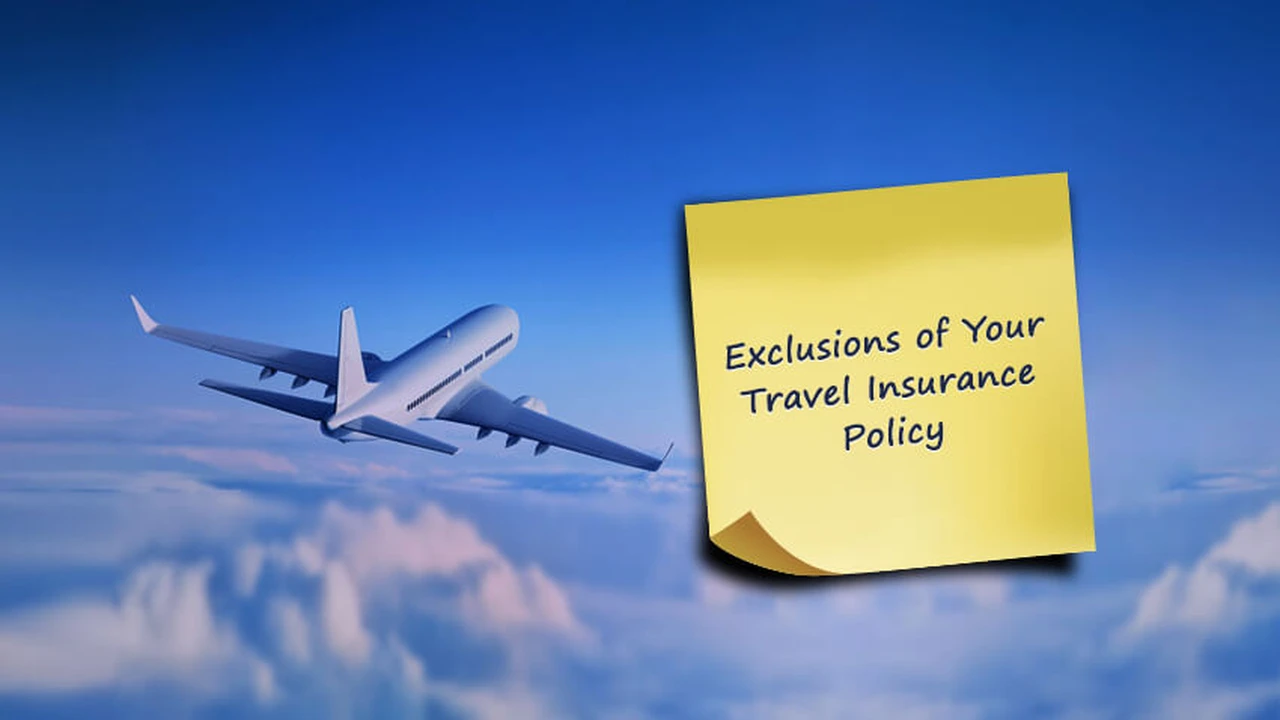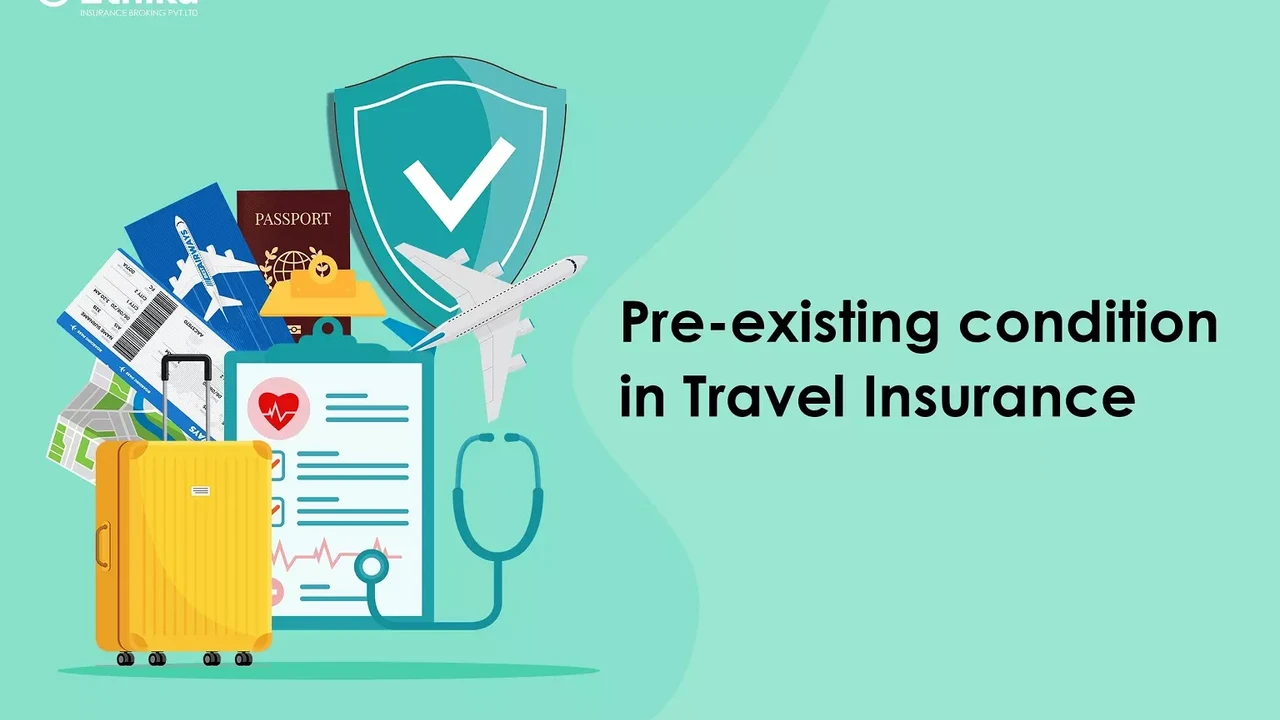Comparing Travel Policy Budgeting Tools
A detailed review of the best budgeting tools designed to help manage and optimize corporate travel spending.

Comparing Travel Policy Budgeting Tools for Optimal Spend
Understanding the Need for Robust Travel Budgeting Software
In today's dynamic business environment, managing corporate travel expenses is more critical than ever. Without proper oversight, travel costs can quickly spiral out of control, impacting your bottom line. This is where robust travel policy budgeting tools come into play. They aren't just about tracking spending; they're about forecasting, optimizing, and ensuring every dollar spent on business travel delivers maximum value. From small startups to large enterprises, the right budgeting tool can transform how you approach travel, turning a potential cost center into a strategic investment. We'll dive deep into why these tools are indispensable and what key features you should prioritize.
Key Features to Look for in Travel Budgeting Solutions
When evaluating travel policy budgeting tools, certain features stand out as non-negotiable for effective cost management and policy enforcement. These aren't just bells and whistles; they are the core functionalities that empower finance teams and travel managers to make informed decisions.
Real Time Expense Tracking and Reporting Capabilities
The ability to track expenses in real-time is paramount. Gone are the days of waiting until month-end to reconcile receipts. Modern tools offer instant visibility into spending, allowing for immediate identification of out-of-policy expenditures. Look for features like automated receipt capture, categorization, and integration with corporate credit cards. Comprehensive reporting capabilities are also crucial, providing customizable dashboards and detailed analytics on spending patterns, vendor usage, and compliance rates. This data is invaluable for identifying areas for savings and negotiating better deals with suppliers.
Budget Forecasting and Predictive Analytics for Travel Spend
Beyond tracking, the best tools offer powerful forecasting capabilities. Leveraging historical data and predictive analytics, they can help you anticipate future travel costs, allowing for more accurate budget allocation. This includes predicting seasonal fluctuations, impact of new projects, or even the effect of global events on travel prices. Such foresight enables proactive adjustments to your travel policy and budget, preventing unexpected overruns.
Policy Enforcement and Approval Workflows for Business Travel
A budgeting tool is only as good as its ability to enforce your travel policy. Look for customizable approval workflows that automatically route requests based on spending limits, travel type, or employee hierarchy. The system should flag out-of-policy bookings or expenses before they occur, providing real-time alerts to both travelers and approvers. This proactive enforcement significantly reduces rogue spending and ensures compliance across the board.
Integration with Existing Financial Systems and ERP
Seamless integration with your existing accounting software, ERP systems, and HR platforms is vital. This eliminates manual data entry, reduces errors, and ensures a single source of truth for all financial data. Look for tools that offer robust APIs or pre-built connectors to popular platforms like QuickBooks, SAP, Oracle, or NetSuite. This integration streamlines the entire procure-to-pay process for travel.
User Experience and Mobile Accessibility for Travelers
For travelers, ease of use is key to adoption. A clunky interface or complicated submission process will lead to frustration and non-compliance. Prioritize tools with intuitive user interfaces, clear navigation, and excellent mobile accessibility. Travelers should be able to book, submit expenses, and get approvals on the go, from any device. A positive user experience encourages adherence to policy and reduces the administrative burden on employees.
Top Travel Policy Budgeting Tools Reviewed
Let's explore some of the leading travel policy budgeting tools available in the market, comparing their strengths, ideal use cases, and pricing structures.
SAP Concur Travel and Expense Management
Overview: SAP Concur is arguably the most comprehensive and widely used travel and expense management solution globally. It offers a full suite of tools covering online booking, expense reporting, invoice processing, and robust analytics. Its strength lies in its deep integration capabilities and scalability, making it suitable for businesses of all sizes, especially large enterprises with complex travel needs.
Key Features:
- Integrated online booking tool (Concur Travel) with policy enforcement.
- Automated expense reporting with OCR technology for receipt scanning.
- Global VAT/GST recovery capabilities.
- Advanced analytics and reporting dashboards for spend visibility.
- Mobile app for on-the-go expense submission and approvals.
- Extensive integration marketplace with various ERPs, HR systems, and travel suppliers.
- Duty of care features for traveler safety.
Ideal Use Case: Large enterprises, multinational corporations, and companies seeking an all-in-one solution for travel, expense, and invoice management with complex policy requirements and global operations.
Pricing: SAP Concur's pricing is typically subscription-based, often per user per month, and can vary significantly based on the modules selected and the size of the organization. It's generally considered a premium solution, with custom quotes provided upon request. Expect to pay anywhere from $8-$25+ per user per month, depending on volume and features.
Expensify for Simplified Expense Management
Overview: Expensify is renowned for its user-friendly interface and SmartScan technology, which automates receipt capture and expense categorization. While it started primarily as an expense reporting tool, it has expanded to include basic travel booking capabilities. It's particularly popular among small to medium-sized businesses (SMBs) and startups due to its simplicity and efficiency.
Key Features:
- SmartScan for automated receipt processing.
- Real-time expense tracking and reporting.
- Corporate card reconciliation.
- Basic travel booking integration (via Expensify Travel).
- Customizable policy rules and approval workflows.
- Integration with accounting software like QuickBooks, Xero, NetSuite.
- Mobile app for easy expense submission.
Ideal Use Case: SMBs, startups, and companies looking for a straightforward, highly automated expense management solution with integrated basic travel booking. Excellent for teams prioritizing ease of use for travelers.
Pricing: Expensify offers tiered pricing plans. Their most popular plan, 'Collect,' is around $5 per active user per month, focusing on expense reporting. Their 'Control' plan, which includes more advanced policy enforcement and corporate card management, starts at around $9 per active user per month. Custom enterprise plans are also available.
Rydoo for Streamlined Travel and Expense
Overview: Rydoo (formerly Xpenditure and iAlbatros) is a modern, cloud-based solution that combines travel booking and expense management into a single platform. It focuses on providing a seamless experience for both travelers and finance teams, emphasizing automation and real-time insights. Rydoo is gaining traction among mid-sized to large companies looking for a more agile and user-centric alternative to traditional systems.
Key Features:
- Integrated travel booking platform with policy controls.
- Automated expense capture and categorization.
- Real-time budget tracking and alerts.
- Customizable approval flows.
- Advanced analytics and reporting.
- Integration with major ERPs and accounting software.
- Strong mobile app experience.
Ideal Use Case: Mid-sized to large companies seeking a modern, integrated travel and expense solution with a strong focus on user experience and real-time insights. Good for organizations looking to move away from manual processes.
Pricing: Rydoo offers various plans, typically starting from around $7-$10 per user per month for their basic expense management features, scaling up for integrated travel booking and advanced functionalities. Enterprise pricing is custom and depends on the number of users and required modules.
TripActions for Modern Business Travel Management
Overview: TripActions is a relatively newer player that has rapidly gained market share by focusing on a modern, consumer-grade user experience combined with powerful AI-driven policy enforcement and cost optimization. It offers a comprehensive platform for booking, expense management, and real-time support, aiming to make business travel enjoyable and efficient.
Key Features:
- AI-powered personalized booking experience.
- Real-time policy guidance and enforcement at the point of sale.
- Integrated expense management (Liquid by TripActions).
- 24/7/365 live human support for travelers.
- Advanced analytics and insights into travel spend.
- Carbon emissions tracking and sustainability features.
- Global inventory and localized content.
Ideal Use Case: Companies of all sizes looking for a modern, user-centric travel management platform that prioritizes traveler experience, real-time support, and leverages AI for cost savings and policy adherence. Particularly strong for companies with frequent travelers.
Pricing: TripActions' pricing is typically subscription-based, often per traveler per month, with different tiers based on features and support levels. They also offer transaction-based fees for bookings. Pricing is generally competitive with other full-service platforms, but custom quotes are required. Expect a similar range to SAP Concur, potentially $10-$30+ per user per month depending on the comprehensive suite of services.
Certify by Emburse for Expense and Spend Management
Overview: Certify, part of the Emburse family of spend management solutions, provides a robust platform for expense reporting, travel booking, and invoice automation. It's known for its strong reporting capabilities and ability to handle complex policy rules, making it a solid choice for mid-market and enterprise companies.
Key Features:
- Automated expense reporting with receipt capture.
- Integrated travel booking module.
- Advanced analytics and customizable dashboards.
- Policy enforcement and approval workflows.
- Integration with various accounting and ERP systems.
- Mobile app for on-the-go management.
- Vendor management and invoice processing.
Ideal Use Case: Mid-sized to large organizations that require a comprehensive expense and spend management solution with strong reporting and policy enforcement capabilities. Good for companies looking for a mature and reliable platform.
Pricing: Certify's pricing is typically subscription-based, per user per month, with different tiers for various features. Pricing is generally competitive within the mid-market and enterprise segments, often requiring a custom quote. Expect a range similar to Rydoo or Expensify's higher tiers, potentially $8-$20+ per user per month.
Implementing Your Chosen Travel Budgeting Tool for Success
Selecting the right tool is just the first step. Successful implementation and ongoing management are crucial for realizing the full benefits of your investment. Here are some best practices to ensure your travel policy budgeting tool delivers optimal results.
Defining Clear Travel Policies and Guidelines
Before rolling out any new tool, ensure your travel policy is clear, concise, and up-to-date. The tool will enforce your policy, so any ambiguities or outdated rules will lead to confusion and non-compliance. Involve key stakeholders from finance, HR, and even frequent travelers in the policy review process. Clearly define spending limits, preferred vendors, approval hierarchies, and acceptable expense categories. This foundational work is critical for the tool's effectiveness.
Training Employees and Stakeholders on New Systems
User adoption is paramount. Provide comprehensive training to all employees who will be using the system, including travelers, approvers, and finance teams. Offer various training formats, such as live webinars, recorded tutorials, and detailed user guides. Emphasize the benefits for them – easier expense submission, faster reimbursements, and clearer guidelines. Ongoing support and a dedicated help desk can also significantly improve adoption rates.
Leveraging Data Analytics for Continuous Optimization
The data generated by your budgeting tool is a goldmine. Regularly analyze reports and dashboards to identify spending trends, areas of non-compliance, and opportunities for cost savings. Use these insights to refine your travel policy, negotiate better deals with suppliers, and optimize your travel program. Continuous monitoring and data-driven decision-making will ensure your travel budget remains efficient and effective over time.
Regular Review and Adjustment of Travel Budgets
The business landscape is constantly evolving, and so should your travel budget. Schedule regular reviews – quarterly or annually – to assess the effectiveness of your budgeting tool and travel policy. Adjust budgets based on actual spend, market conditions, and business objectives. Be flexible and willing to adapt your strategy to ensure your travel program remains aligned with your company's financial goals and operational needs.
The Future of Travel Budgeting and AI Integration
The landscape of travel policy budgeting tools is continuously evolving, with artificial intelligence (AI) and machine learning (ML) playing an increasingly significant role. Expect to see more sophisticated predictive analytics, AI-driven policy recommendations, and even automated negotiation with vendors based on real-time market data. Virtual payment solutions and blockchain technology are also poised to enhance security and transparency in travel spending. The goal is to create an even more seamless, intelligent, and cost-effective travel management ecosystem, empowering businesses to optimize every aspect of their corporate travel program.
:max_bytes(150000):strip_icc()/277019-baked-pork-chops-with-cream-of-mushroom-soup-DDMFS-beauty-4x3-BG-7505-5762b731cf30447d9cbbbbbf387beafa.jpg)






